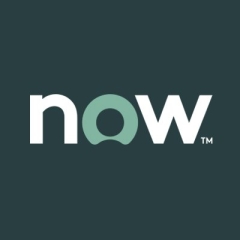What is most valuable?
The most valuable parts of ServiceNow for us is the flexibility that it has, that it's a platform, and that we can develop pretty much anything that we need, not only for IT, but also for HR, our finance department, our register's office, pretty much any organization around campus. ServiceNow provides us with a platform that we can develop the tools that are necessary for just about any function on campus.
How has it helped my organization?
It gives us one platform that we can go in and do reporting. Reporting is probably one of the key features, it's getting access to data that we have in ServiceNow and being able to report on that is a key element in how we are analyzing and making decisions. We can quickly pull up reports, graphs, charts, whatever we need to be able to make decisions, where beforehand just to pull the data was a lot harder.
We've developed a number of apps or workflows that literally have taken days or weeks to complete because of the approval process. We've taken that into a workflow where now the approvals are sent via email. A user, or an administrator just needs to simply click on that email, click on approve, send it back. We've seen in some of those cases where, like I said, it's gone from days or weeks to literally hours and minutes. Another scenario is we've taken our employee leave system from a paper base where paper had to be filled out manually, signed, given to a staff assistant to enter into our ERP system to being done on the IT systems.
We've now taken that entire process where an employee fills it out online wherever they may be. They submit it, it routes to their supervisor for an approval. That approval comes back, and then that system is fed into our ERP system. There's no manual process to it, other than entering the leave request, selecting the days, and the number of hours you're taking, and the supervisor approving it. We estimate that university-wide, that's probably saving about 2,000 hours per year just on employees having to enter that data back into our ERP system.
What needs improvement?
Probably the biggest thing that is frustrating is the changes in their price structure, their price modeling. That's been very frustrating for us. Since we came on four years ago, it's changed quite a bit over time. There's been a lot of uncertainty on what the pricing scheme is going to be. It's worked out well for us, but that uncertainty as the company has grown, not knowing where they're going with it, has been a little frustrating.
What do I think about the stability of the solution?
The first real latency issue we had was about a month ago. We attributed it to probably some updates that we had run. We backed those off to see if they impacted any of that performance. We were thinking it was something we had done. Come to find out that they had transferred us from their Virginia data site to their San Jose, I believe and they had some issues. Once we recognized that it wasn't on our end, we notified them and they were quick to respond to it. That's the only real latency issue that we've had. It's always a concern. That's something that we're always very aware of is because our users are like, "If ServiceNow continues to grow, what's going to be the impact to performance?"
What do I think about the scalability of the solution?
As we grow as an organization, meaning the number of developers we have in the system, we've had a big concern with how we give access to developers, but don't allow them to hurt the whole environment once they’re in. There again, the changes that they've introduced with Helsinki, and that being able to do more sculpt applications, and narrow the access that admins have is a huge improvement. We keep growing as far as the number of developers we have in the system, but we have major concern over what they can touch, and what they should and shouldn't touch.
Scaling, as far as what we're doing in the system, we haven't have any issue with. Scaling, as far as the number of developers and how to organize that, as far as bringing more and more people into actually develop on it, that's been our concern. The time commitment to get them up and running, speed, get them trained, especially trained in how we do things. The other part is the access that we give them, so the issue is not with the solution itself, it's more organizationally.
Which solution did I use previously and why did I switch?
We had a multitude of systems. When we talked about a knowledge base, Knowledge Base was a home-grown system that we had outgrown as far as IT and the university. We ran into severe limitations with our Knowledge Base. We had old content out there. ServiceNow allowed us to restructure how we're doing knowledge, and implementing a knowledge base to the entire campus. Incident, we were using Footprints, which was eventually bought out by BMC.
It was sold two or three time in Footprints. We had used Remedy. Remedy proved to be so cumbersome to manage, as far as an incident management tool. We've gone multiple directions. ServiceNow, as far as incident management, allows us to quickly escalate issues to the proper teams. Not only across IT, but we've incorporated it in so we can escalate issues to departmental IT personnel as well, and even outside of IT where necessary.
What other advice do I have?
I'm a big proponent of ServiceNow. While I think it's a great system, it's not a silver bullet. I don't think there is a silver bullet system out there for IT, or for an enterprise. I would say ServiceNow is as close, in the variety of systems that I've come across, it's as close as a system has come to meeting not only an IT need, but an organizational need. That's initially where we started. We started it at with an IT need. I would say in order for it to be successful, you have to have buy-in from the top. If your administration is buying in with it, and can show their level of support for that change, that system, it makes it go a lot easier. We had a mixture of support. Some things went well. Others, we didn't have the support, and so it was an uphill battle.
Disclosure: My company does not have a business relationship with this vendor other than being a customer.


















